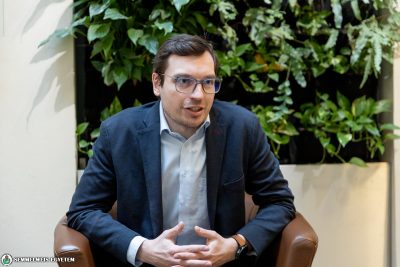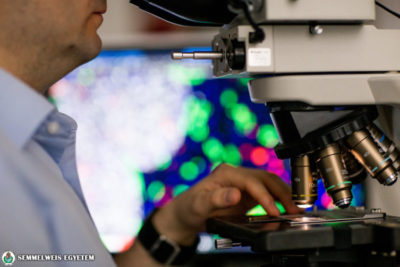Semmelweis University’s research project led by Dr. Botond Roska has been granted a funding of 300 million HUF in the framework of the National Research, Development and Innovation Office’s Frontline – Research Excellence Programme. Dr. Botond Roska is the Director of the Institute of Molecular and Clinical Ophthalmology in Basel, visiting professor and former student of Semmelweis University. The research project “Novel approaches to restore vision and to slow down vision loss” has three goals: to restore color vision in blind retinas, create smart optogenetic goggles, and study the mechanism of ganglion cell death, which is the main cause of vision loss in case of glaucoma. The project involving the institute in Basel, Semmelweis University’s Department of Ophthalmology and Femtonics Ltd is coordinated by the university’s Department of Anatomy, Histology and Embryology.
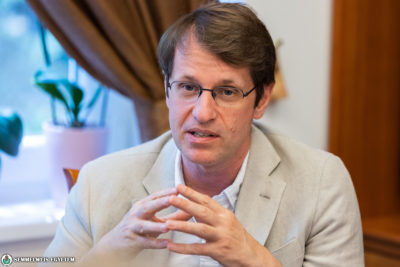 The research funded by the grant will involve the close collaboration between three researchers from Budapest and the institute in Basel. The participants of the cooperation are Dr. Arnold Szabó, assistant lecturer of Semmelweis University’s Department of Anatomy, Histology and Embryology, leader of the Retina Laboratory; Dr. Balázs Rózsa, founding owner of Femtonics Ltd. and research fellow of the Institute of Experimental Medicine; and Dr. Zoltán Zsolt Nagy, director of the university’s Department of Ophthalmology.
The research funded by the grant will involve the close collaboration between three researchers from Budapest and the institute in Basel. The participants of the cooperation are Dr. Arnold Szabó, assistant lecturer of Semmelweis University’s Department of Anatomy, Histology and Embryology, leader of the Retina Laboratory; Dr. Balázs Rózsa, founding owner of Femtonics Ltd. and research fellow of the Institute of Experimental Medicine; and Dr. Zoltán Zsolt Nagy, director of the university’s Department of Ophthalmology.
“We perform electrophysiological and molecular experiments on human post-mortem retina at Semmelweis University’s Department of Anatomy, Histology and Embryology. The state-of-the-art, 3D two-photon microscopes of Femtonics Ltd. will be used at the facilities of Femtonics Ltd to perform optical experiments on human retinas. Molecular devices are being developed at the Institute of Molecular and Clinical Ophthalmology in Basel (IOB). The three specialists from Budapest will work in close cooperation with the staff members of the institute in Basel”, the project leader explained.
The research project, realized in the framework of the Frontline – Research Excellence Programme has three objectives. One is to try to restore color vision in blind retinas. Further goals include the creation of smart optogenetic goggles, which calculate the excitation pattern of the optogenetically transduced retina in real time, so that activity of the optic nerve best approximates that of the healthy human retina. The medical device is designed to ensure that the visual experience of restored vision is as close as possible to normal vision. Furthermore, the research aims to investigate the mechanism of ganglion cell death, which may help in the future planning therapies to slow down cell degeneration. The degeneration of ganglion cell axons, which make up the optic nerve is the main cause of blindness in the case of glaucoma.
Dr. Botond Roska considers the cooperation with Hungarian specialists of utmost importance.
“Dr. Arnold Szabó invented the method to keep the human retina alive for 14 weeks post mortem. This method, combined with the world’s first 3D two-photon laser microscopes made by Dr. Balázs Rózsa as well as the expertise of Dr. Zoltán Zsolt Nagy in ophthalmic diseases, has great potential”, said Dr. Botond Roska, explaining that the project is expected to start in October and hopes to see results in a few years.
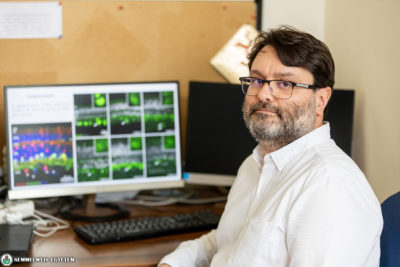 “The success of the grant application is the result of more than seven years of intensive cooperation between the partners. In a series of experiments requiring a lot of energy and working hours over the recent years, we have created and further developed several pioneering techniques and procedures that have made it possible to perform previously unimaginable experiments on isolated human retinal tissue removed from the body”, Dr. Arnold Szabó pointed out.
“The success of the grant application is the result of more than seven years of intensive cooperation between the partners. In a series of experiments requiring a lot of energy and working hours over the recent years, we have created and further developed several pioneering techniques and procedures that have made it possible to perform previously unimaginable experiments on isolated human retinal tissue removed from the body”, Dr. Arnold Szabó pointed out.
He also added that they have joint papers with the research group of Dr. Botond Roska published in prestigious scientific journals such as Nature Neuroscience, Neuron, Science and Cell. Dr. Arnold Szabó is particularly pleased that their joint projects are all translational research projects of clinical relevance.
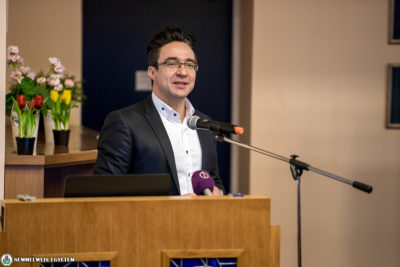 Based on 44 patents and more than ten highly prestigious publications in connection with the project, Femtonics Ltd. together with Dr. Botond Roska and Dr. Arnold Szabó are developing a laser microscopy procedure, which is capable of high-speed parallel measurements of spatially complex neural networks on up to hundreds of samples from the human brain and retina. This will allow to select those optogenetically transduced samples for therapeutic purposes, which have most effectively regained their physiological function. With the help of the method, it will be possible to select from thousands of opportunities, which are expected to provide the most effective therapy in the clinical trials later on.
Based on 44 patents and more than ten highly prestigious publications in connection with the project, Femtonics Ltd. together with Dr. Botond Roska and Dr. Arnold Szabó are developing a laser microscopy procedure, which is capable of high-speed parallel measurements of spatially complex neural networks on up to hundreds of samples from the human brain and retina. This will allow to select those optogenetically transduced samples for therapeutic purposes, which have most effectively regained their physiological function. With the help of the method, it will be possible to select from thousands of opportunities, which are expected to provide the most effective therapy in the clinical trials later on.
“Another important mission is to combine the new molecular biology methodology of Dr. Botond Roska and team with our 3D laser microscopy technology to find ontogenetic solutions for several important diseases of the central nervous system (such as depression, dementia, epilepsy). With the help of Dr. Zsolt Zoltán Nagy, we would like to lay the foundations of a new ophthalmic diagnostic method based on laser microscopy, which helps the detailed examination of patients who have undergone gene therapy”, highlighted Dr. Balázs Rózsa.
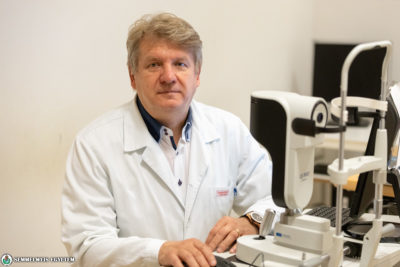 The retinal tissues required for the research project are provided by Semmelweis University’s Department of Ophthalmology, which will also play an important role in another project running in parallel. As Dr. Zoltán Zsolt Nagy pointed out, the Basel Institute of Molecular and Clinical Ophthalmology, Semmelweis University’s Department of Ophthalmology and the Department of Anatomy, Histology and Embryology had previously signed a cooperation agreement defining that the university department will be one of the sites for research related to optogenetic therapy with the involvement of patients.
The retinal tissues required for the research project are provided by Semmelweis University’s Department of Ophthalmology, which will also play an important role in another project running in parallel. As Dr. Zoltán Zsolt Nagy pointed out, the Basel Institute of Molecular and Clinical Ophthalmology, Semmelweis University’s Department of Ophthalmology and the Department of Anatomy, Histology and Embryology had previously signed a cooperation agreement defining that the university department will be one of the sites for research related to optogenetic therapy with the involvement of patients.
“With the help of the gene therapy developed by the research team of Dr. Botond Roska, the visual functions of a patient suffering from a rare eye disease, retinitis pigmentosa, have been partially restored. The research has recently been approved by the Medical Research Council and the National Public Health Center. As a result, patients with certain types of hereditary eye diseases may be selected for gene therapy in the research phase in the next year or two”, said Dr. Zoltán Zsolt Nagy.
Pálma Dobozi
Photo: Attila Kovács – Semmelweis University; Gábor Ancsin
Translation: Katalin Illés-Romhányi
